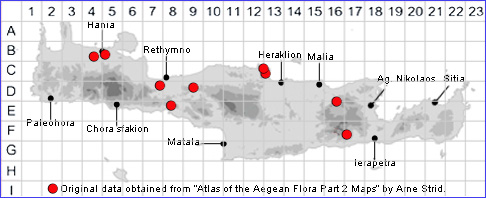SPECIES DESCRIPTION
OROBANCHE HEDERAE
Family and Genus:- See- OROBANCHACEAE/Sect. OROBANCHE
Common Names:- None
Homotypic Synonyms:- Orobanche balearica, Orobanche glaberrima,
Orobanche laurina, Orobanche salisii.
Meaning:- Orobanche (Gr) Legume-strangler. (one species is parasitic on
legumes).
Hederae (L) Of ivy.
Stems:-
1) 15-60 x 0·3-0·8 cm, usually strongly swollen at the base, glandular-
pubescent, yellow to reddish-purple.
Leaves:-
1) Upper, 12-30 mm, rather broadly lanceolate, glandular-pubescent
Flowers:-
1) Inflorescence, cylindrical, lax.
2) Bracts, lanceolate, equalling or exceeding the flower.
3) Calyx segments, entire or unequally bidentate, l/2-2/3 as long as the corolla,
dark red or brown, densely glandular-pubescent.
4) Corolla, 10-22 mm, tubular, regularly curved or almost straight in the middle,
expanded above the insertion of the stamens, constricted below the lower lip,
light yellow to yellowish-brown with reddish-violet veins, the back often tinged
violet or red, glandular-pubescent outside.
a) upper lip, entire or emarginate. All lobes usually porrect, irregularly dentate.
5) Stamens, inserted 3-4 mm above the base of the corolla tube, pubescent below,
glabrous above.
6) Stigma, yellow or orange.
Fruit:-
1) Capsule, 10-12 mm.
Key features:-
1) Corolla, tubular, constricted just below lower lip, variously coloured but not dark
shining red inside .
Habitat:- Natural habitats, gorges, deciduous woodland and frequently by churches
and cemeteries. (0-)200-1100 m.
Host:- Hedera helix, sometimes gregarious in shady places.
Distribution:- Scattered throughout Greece. W & C Europe, NW Africa, though
Anatolia to N Iran. Rare on Crete, known from only a few locations.
Flowering time:- Late Apr to mid-July.
Photos by:- Steve Lenton

